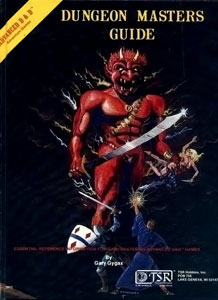Now, Clerics:
I went to a Catholic high school. There was a chapel and monastery on campus. No, it wasn’t a boarding school. Yes, it was co-ed. Yes, we wore uniforms. Yes, there were a lot of old-money brats there. No. I was never molested.
Once, in junior or sophomore year, the Bishop of the Diocese of Tulsa came
to one of our chapel services and gave a homily about being a good Christian
during Halloween. He told the entire
student body about how Druids in olden times would dress their children as
pumpkins to disguise them so that spirits would not kidnap them during
Halloween. I shit you not.
For starters, pumpkins are a
New-World crop. There was definitely lots of pre-Columbian contact. But Druids
did not have a lot of gourds lying around.
The more acute among us realized that
this supposed figure of authority was either a moron, or a casual liar on the
level of Bob Dylan How can a young person respect that?
A large cross-section of young people
hold religion in utter contempt. We still wonder about the nature of creation
and how to live a good life and all that. But we’re not taking our answers to
these questions on faith, so to speak.
So naturally, pretty much none of us want to play Clerics.
Being beholden to some questionable
entity for our powers? No thanks. Having to maintain a standard of behavior?
How restrictive. I mean, we play this game to relax and have fun. Geez! From my
observations, players are more likely to select the cuddly, independent,
non-denominational Druid for their healing and buffing needs. (But that is
another post)(Incidentally, 5th edition
has something called a warlock- an arcane magic-user who gets power from pacts
with demonic entities. Isn’t that essentially an evil cleric? Shouldn’t these
classes be unified under a single mechanic?)
I want to play a Cleric, though.
IRL, I don’t have a lot that I really
have faith in. But I think I would like it if I did. If
everyday life doesn’t offer a lot you can believe in, doesn’t belief become an
appealing fantasy? People will do dumb and harmful things for the sake of
having something to believe in. Fortunately, we have this nifty fantasy game
where we can simulate just that.
So what made clerics seem so lame, and how can we fix this?
I wasn’t around or playing much at
the time, but I have a theory (baseless supposition) that back in the seventies,
people were reading the books in appendix N http://www.amazon.com/Gygaxs-amp-Appendix-Inspirational-Educational/lm/R3A9UPKOXVI0I1 and getting crazy-awesome inspiration for how to play Clerics without
having to be guided much by the rules.
Then came the 1980s and the Satanic
Panic. The business-side of the hobby
suddenly had to worry about public image, since most people playing D&D
still had to get it by their moms. TSR suddenly had to make their product
seem less freaky-deaky.
 Less Freaky-Deaky, Please.
Less Freaky-Deaky, Please.
(Incidentally, good clerics were
restricted to bludgeoning weapons. People quibble about how historical this is
or isn’t. Those saying it is total BS seem to say that the only precedent for
this is the image of Bishop Odo in the Bayeux Tapestry.
AD&D Clerics did have one particularly brilliant feature. At certain levels, they were
granted the ability to attract followers and to build churches and abbeys. This is a little arbitrary, I'm a little shaky on how a cleric can kill a kobold, leveling up, and suddenly
be qualified to build a fortified abbey. But the idea that a cleric is expected
to expand the empire of their deity is a powerful one. It shows that a Cleric
is supposed to have a degree of influence and involvement with the setting.
In later editions; 3rd and later, this feature is stripped away, and the building of churches or congregations is never mentioned. Clerics are reduced to holy murder-hobos and the play-experience suffers for it
Consider the roles that clergy played in historical societies. For a good chunk of history, religious professionals were just about the only people with access to education. They took on positions of authority in communities. They were the sort of people that common folk trusted (they definitely wouldn’t trust wandering warriors and definitely not wizards) Consider how these offices expand in a world where the cleric’s magic has an observable and material effect.
Religious figures also take on
violent and adventurous aspects. Violent Evangelicism is the aspect of organized
religion which draws the bitterest criticism, and a good deal of blame for the
evils in the world. But aggressive
clericalism actually dovetails nicely with a game which is basically about killing
things and taking their stuff.
All this stuff needs to be
mentioned or depicted in the core rulebooks, or else it will leave the sphere
of normal possibilities of play.
Let me sum up by going over the
equipment list of a possible, aggressive Cleric:
Weapons and armor: Possibly unnecessary. You should have followers and devotees to handle
this stuff. It also depends on the public image you are going for.
Case of paper and writing utensils: for writing sermons and drawing doodles of the temple you
want to get built some day.Torches or equivalent: For burning the edifices and churches of competing gods
Crowbar: For dismantling false idols.
50’ of rope: For lynching heretics and blasphemers.
Healer’s Kit: For if you run out of spells. Or just don’t want to waste them. Healing people a PR thing.
Holy Symbol: For turning undead. But mostly for brand-recognition

Cleric
ReplyDelete